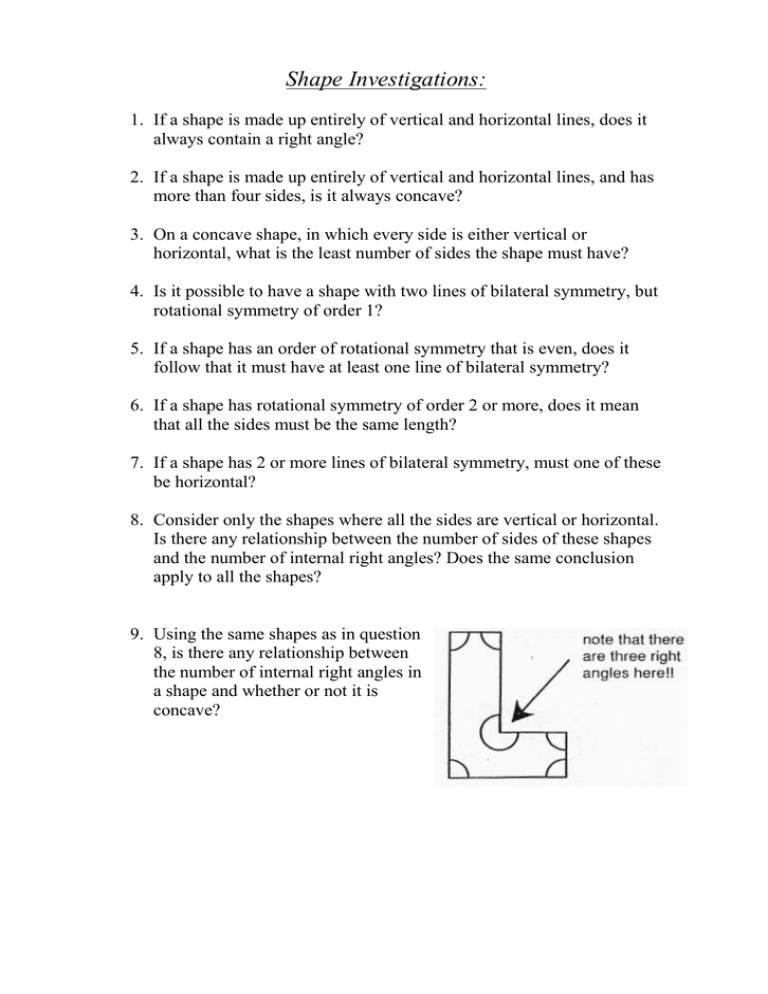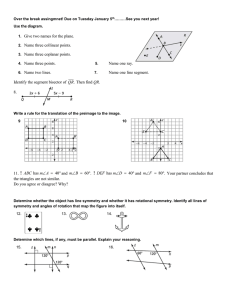Shape Investigations:
advertisement

Shape Investigations: 1. If a shape is made up entirely of vertical and horizontal lines, does it always contain a right angle? 2. If a shape is made up entirely of vertical and horizontal lines, and has more than four sides, is it always concave? 3. On a concave shape, in which every side is either vertical or horizontal, what is the least number of sides the shape must have? 4. Is it possible to have a shape with two lines of bilateral symmetry, but rotational symmetry of order 1? 5. If a shape has an order of rotational symmetry that is even, does it follow that it must have at least one line of bilateral symmetry? 6. If a shape has rotational symmetry of order 2 or more, does it mean that all the sides must be the same length? 7. If a shape has 2 or more lines of bilateral symmetry, must one of these be horizontal? 8. Consider only the shapes where all the sides are vertical or horizontal. Is there any relationship between the number of sides of these shapes and the number of internal right angles? Does the same conclusion apply to all the shapes? 9. Using the same shapes as in question 8, is there any relationship between the number of internal right angles in a shape and whether or not it is concave? CUTTING CORNERS Take a sheet of paper. Cut off its four corners. How many pieces have you cut off? Take another sheet of paper. Fold it in half. Cut off its four corners. How many pieces have you cut off? What happens for: two folds? Three folds? INVESTIGATE SQUARES SYMMETRY Three squares are shaded. There are two lines of symmetry Investigate different symmetrical patterns


